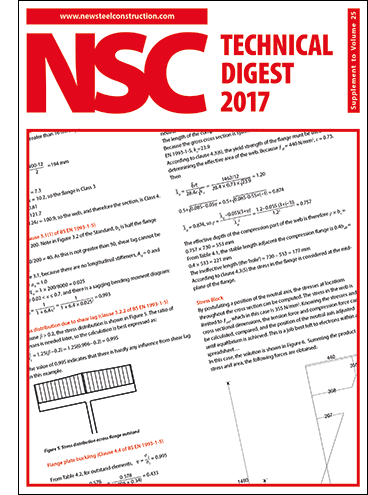Technical
AD 491: Hydrogen embrittlement in structural bolting assemblies – effects and remedies
Introduction
Hydrogen embrittlement is a mode of failure that can affect high strength structural steel bolts. It is a reduction in the ductility of steel due to absorbed hydrogen making the steel less able to support the imposed stresses which can lead to the development of micro cracking and eventually failure.
This mode of failure is not well understood by engineers and specifiers, as all too often high strength steel bolts are specified without considering the implications of hydrogen embrittlement. This technical note briefly explains the three factors that need to be present to trigger this mode of failure and how this can be avoided.
What triggers hydrogen embrittlement failure?
For this mode of failure to occur the following three factors must be present:
- The steel must be a high strength steel, typically above 1000 N/mm², this includes property class 10.9 bolts and above, and
- There must be a tensile stress in the steel (due to the preload in a bolt or externally applied loads), and
- The steel must have absorbed atomic hydrogen. This is explained in more detail in the next paragraph.
A more detailed explanation of hydrogen embrittlement in structural fasteners is given in Hydrogen Embrittlement – Its effect on Structural Bolting Assemblies, which is available at: www.steelconstruction.info/Fabrication#Resources.
Sources of absorbed hydrogen
Absorbed atomic hydrogen can come from two sources:
- From the manufacturing process – i.e. Internal hydrogen embrittlement
- From the environment – i.e. Environmental hydrogen embrittlement
Studies have shown that hydrogen can be absorbed during manufacture, e.g. certain types of heat treatment and surface coatings. To avoid this, the manufacturing process must be carefully controlled. The necessary controls and tests are given in the ‘BCSA Model Specification for the Purchase of Structural Bolting Assemblies and Holding Down Bolts’ (MPS), and high strength bolts should be specified in accordance with this specification. The MPS is also available at: www.steelconstruction.info/Fabrication#Resources.
Environmental hydrogen occurs when the steel is subject to corrosion from the environment. This can be avoided by designing the connections of a structure in such a way that they do not put high tensile strength bolting assemblies into areas where water or other electrolytes are allowed to collect and remain. Both coated and uncoated fasteners are susceptible to environmental hydrogen embrittlement.
Conclusion
By following the recommendations below, the risk of hydrogen embrittlement can be significantly reduced:
- Structural bolting assemblies should be obtained from approved suppliers certified to National Highways Sector Scheme 3 (NHSS3) and that bolts conform to the BCSA MPS. A list of Approved Suppliers can be found on the LANTRA Schedule of Suppliers website and a list of the BCSA suppliers of structural fasteners complying with NHSS3 and the MPS can be found in the ‘Industry members’ listing at the back of New Steel Construction or on the BCSA website www.steelconstruction.org and,
- Ensure that the design of the connections does not put high strength steel bolting assemblies into areas where water or other electrolytes are allowed to collect and remain. This applies to both coated and uncoated fasteners
Contact: Ana M. Girão Coelho
Email: ana.girao-coelho@steelconstruction.org











